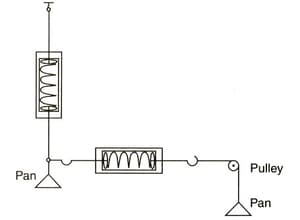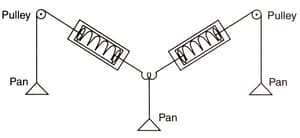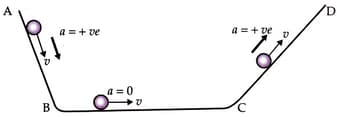To study the third law of motion, the following sets of apparatus are available in a laboratory.
Set (i) One spring balance, two weight boxes, inextensible thread, one pulley with a clamp, two pans of known mass.
Set (ii) Two identical spring balances, one weight box, inextensible thread, one frictionless pulley with a clamp, one pan of known mass, rigid support.
Set (iii) Four identical spring balances, two pulleys, inextensible thread, two clamps, two pans of known masses, two rigid support.
Set (iv) Two identical spring balances, two weight boxes, two rigid supports, two pans of known masses, inextensible thread, two frictionless pulleys with clamps.
To perform the experiment successfully by using minimum apparatus, the best choice would be:

Important Questions on Force and Laws of Motion
For doing the experiment "to study the third law of motion using two spring balances", four students A, B, C and D set up their apparatus as shown below. The best setup is that of student.
(A)

(B)

(C)

(D)

A body is left from the point and allowed to move along the path which is smooth. The thin arrow represents velocity and the thick arrow represents acceleration. What is wrong with one of the arrow?

The following is the distance-time table on an object in motion:
| Time in seconds | Distance in meters |
What conclusion can you draw about the acceleration? Is it constant, increasing, decreasing, or zero?
The following is the distance-time table on an object in motion:
| Time in seconds | Distance in meters |
What do you infer about the forces acting on the object?
